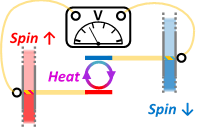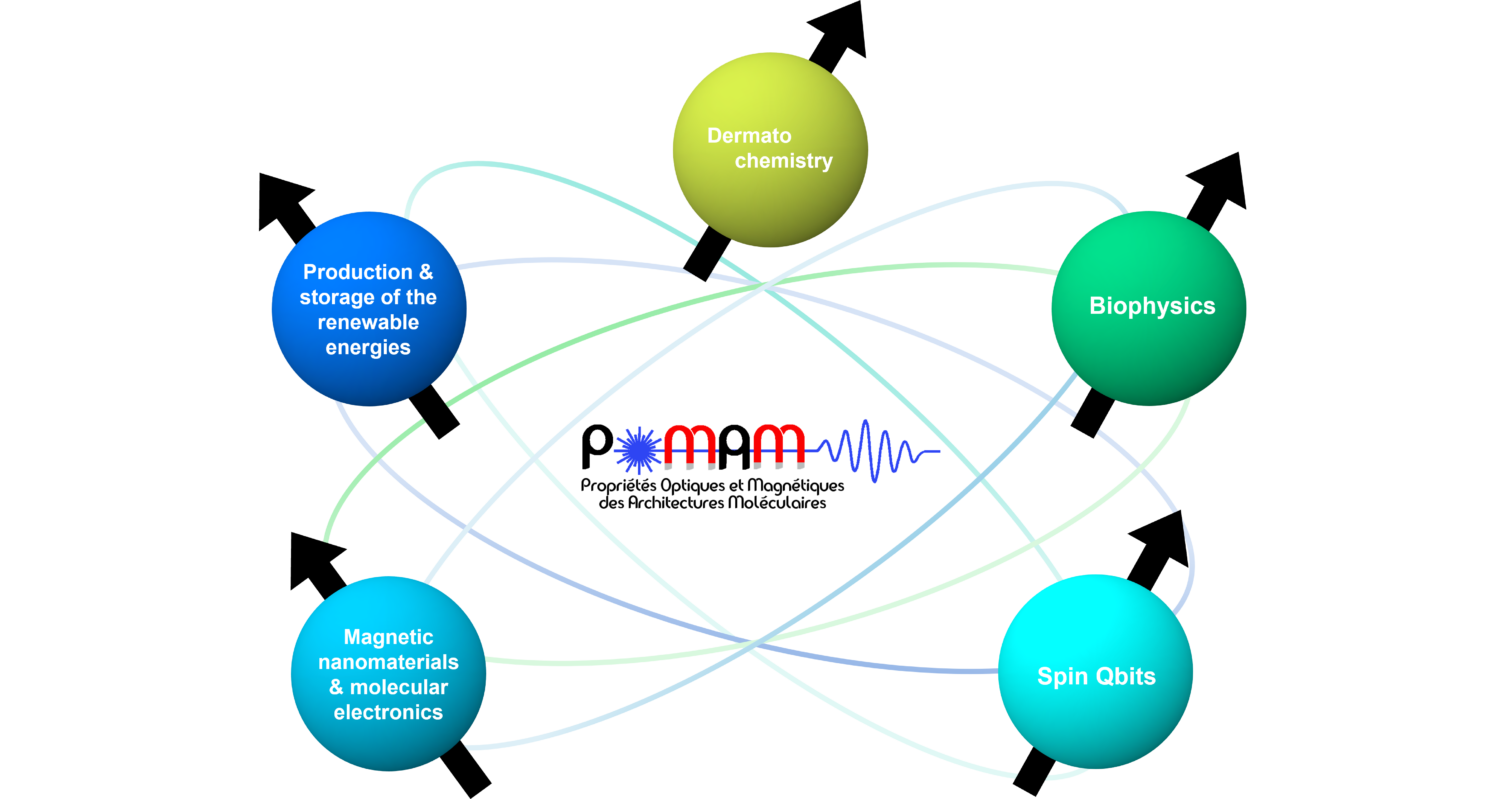Combining spintronics and quantum thermodynamics to harvest energy at room temperature
This work has been initiated and directed by M. Bowen
Today’s energy-hungry global society is struggling with how to mitigate the effects of man-made climate change, and under what conditions of voluntary/coercive adaptation. Present fossil fuel-free technologies appear inadequate/insufficient to meet this daunting challenge. Addressing this challenge from a technological standpoint is therefore likely to require the maturation of bold new physical concepts that can be fast-tracked technologically.
An international scientific team from the CNRS, the U. of Strasbourg and U. of Lorraine in France, together with the Uppsala U. in Sweden, has fortuitously discovered one such concept at the poorly understood/documented intersection between two otherwise disjointed research fields. 1) Spintronics is a next-generation low-power electronics that utilize the electron’s quantum spin property to, for example, enable read heads in hard drives, non-volatile magnetic RAM (MRAM), microwave emitters/receivers and neuromorphic computing. It is thus mostly concerned with information storage/communication technologies. 2) Quantum physics/thermodynamics aims to reexamine the rules of thermodynamics when matter is confined at the nanoscale to exhibit quantum properties, and thus understand how quantum engines operate.
 The team’s experiments and analyses show that it is possible to assemble an electrical generator that utilizes the electron spin to harvest thermal fluctuations at room temperature. Referring to the engine’s schematic, the harvesting of ambient temperature occurs over paramagnetic (PM) centers — atom-level magnets whose orientation fluctuates due to heat. The engine’s electrodes, called spintronic selectors, allow electrons of only one spin (↑ in red, or ↓ in blue) to conduct. Because heat mixes the electron spin on the PM center (middle) with energetically separated spin energy levels, transport (yellow lines) between the PM center and the electrodes occurs at different energy levels for each electrode. This causes a spontaneous bias voltage V to appear between the electrodes, and thus a spontaneous current to flow once the electrical circuit is closed.
The team’s experiments and analyses show that it is possible to assemble an electrical generator that utilizes the electron spin to harvest thermal fluctuations at room temperature. Referring to the engine’s schematic, the harvesting of ambient temperature occurs over paramagnetic (PM) centers — atom-level magnets whose orientation fluctuates due to heat. The engine’s electrodes, called spintronic selectors, allow electrons of only one spin (↑ in red, or ↓ in blue) to conduct. Because heat mixes the electron spin on the PM center (middle) with energetically separated spin energy levels, transport (yellow lines) between the PM center and the electrodes occurs at different energy levels for each electrode. This causes a spontaneous bias voltage V to appear between the electrodes, and thus a spontaneous current to flow once the electrical circuit is closed.
The team utilized analytical and ab-initio theories to establish a link between this spin engine concept and room-temperature experiments on a solid-state spintronic device called a magnetic tunnel junction (MTJ). Here, the interface between the ferromagnetic metal Co and carbon atoms was used as a spintronic selector, and carbon atoms substituting oxygen atoms in the MgO tunnel barrier as PM centers.
According to the experiments, if such devices could be mass produced at high success yields, then at present densities of MgO MTJs within next-generation memories, this concept could yield chips that continuously produce electrical power with an areal power density that is 3x greater than raw solar irradiation on Earth. The challenge is now to confirm certain fundamental aspects of this engine’s operation, to achieve device reproducibility by controlling at the atomic level the position and properties of the PM centers in a suitable solid-state device, to implement CMOS back-end integration (e.g. thanks to existing progress with MgO MTJ technologies), to manage engineering issues such as heat flow and interconnect losses, and to drastically lower the resulting chip’s areal cost.
To avert climate catastrophe within the GIEC-determined 11-year timeframe using a technological solution such as this one will require a massive, focused undertaking akin to that deployed in the Manhattan project, combining scientists, decision-/policy-makers and industrial partners already working on MTJ-based spintronic technologies. The website ‘www.spinengine.tech’ under construction will help to communicate on this undertaking. As a measure of hope, only 7-9 years elapsed between the discovery (in 1986-1988) of spintronics and first commercial products (1995). If the solution to the climate crisis is to involve new technology, then the maturation of this, and hopefully other, radically new physical concepts that can be technologically fast-tracked should from now on be considered with the urgency and prioritization that the stakes of a climate catastrophe portend.
This scientific work was published in Communications Physics on Sept. 25th 2019, thanks to experiments conducted on March 14th 2017, with financial support from the Institut Carnot MICA (project ‘Spinterface’), from the ANR (ANR-09-JCJC-0137, ANR-14-CE26-0009-01), the Labex NIE “Symmix” (ANR-11-LABX-0058 NIE) and Vetenskapsrådet. This work was performed using HPC resources from the Strasbourg Mesocenter and from the GENCICINES Grant 2016-gem1100. DOI: 10.1038/s42005-019-0207-8
